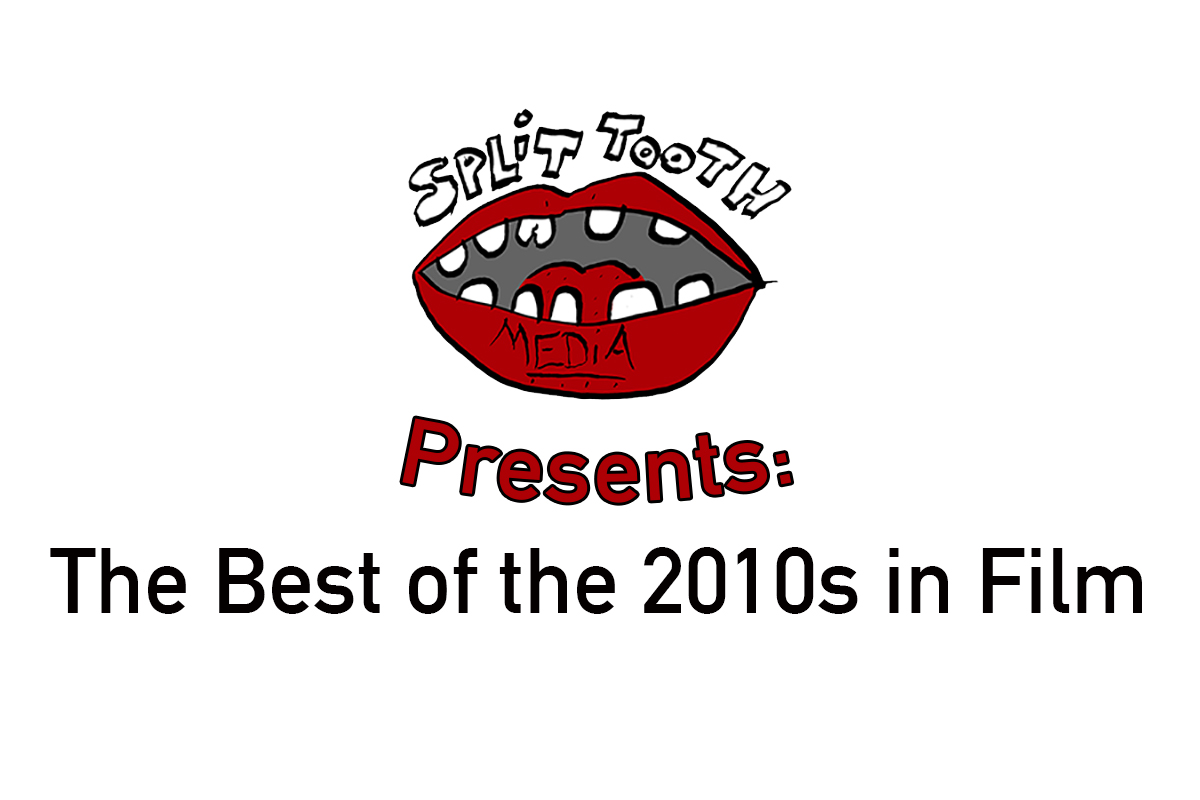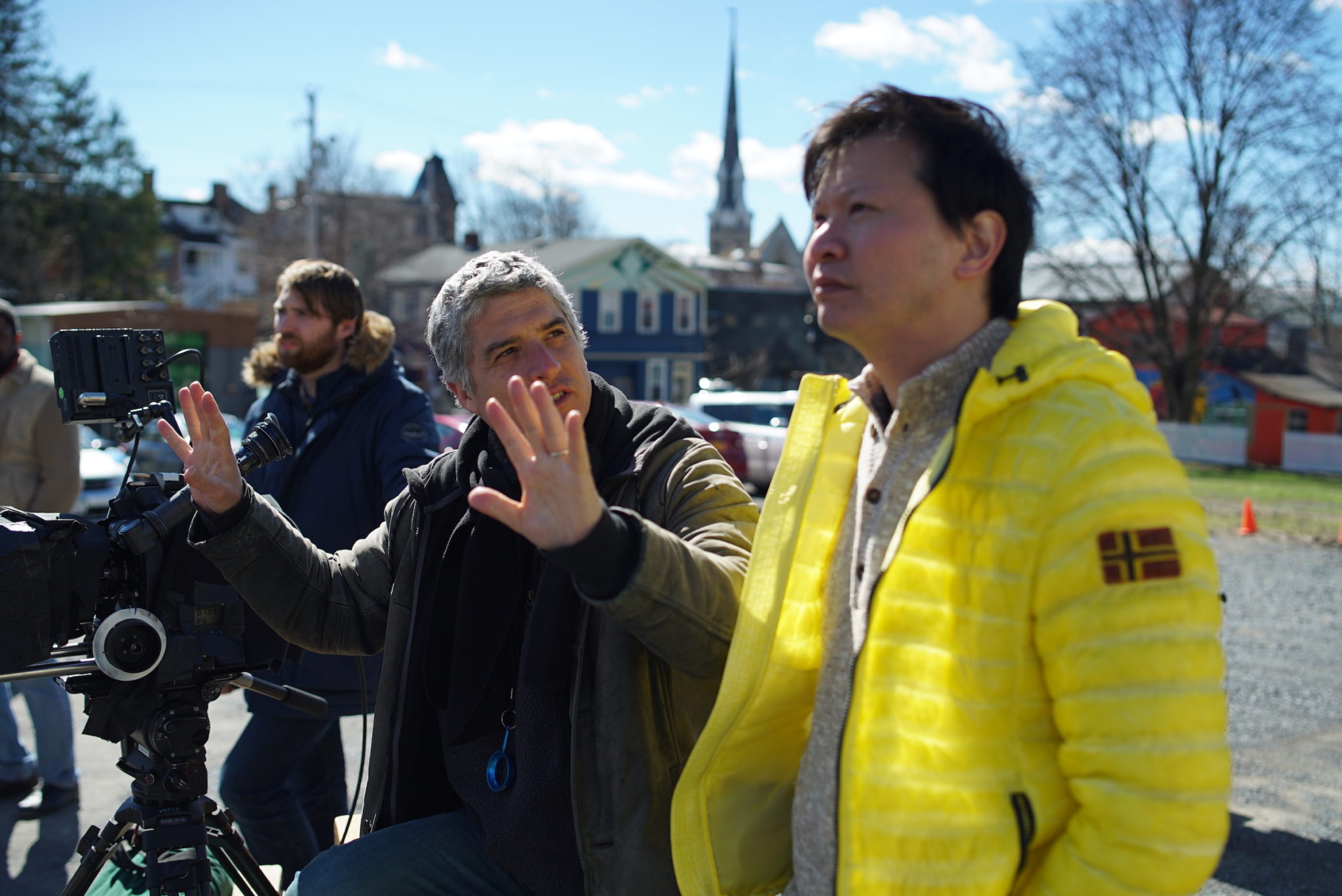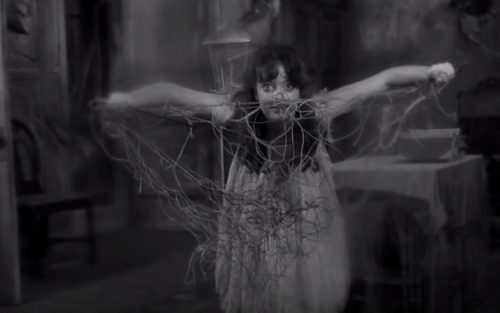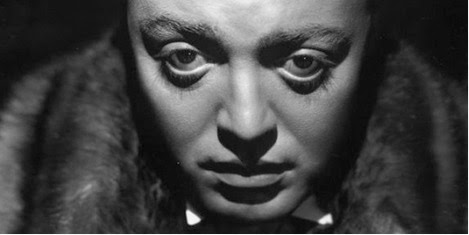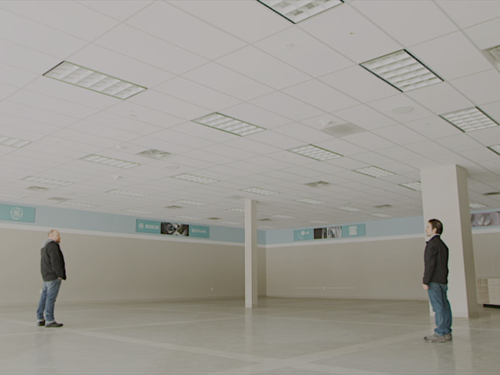In the second of a two-part interview series, independent director Patrick Wang discusses his acclaimed A Bread Factory films
Read Pt. 1 of the Split Tooth interview with Patrick Wang here
Patrick Wang is among the best and most original filmmakers of the last decade. Before the holidays, I spoke to Patrick about directing each of his feature films as well as working in independent theater, imitating titans of Russian literature, and rejecting conventional wisdom at each stage of the creative process.
A Bread Factory, Part One: For the Sake of Gold (2018)
For 40 years, Dorothea (Tyne Daly, who earned an Independent Spirit Award nomination) and Greta (Elisabeth Henry, who deserved one as well) have presided over The Bread Factory, a hub for the arts in fictional Checkford, New York. All the while — as the opening credits make clear — they’ve been at the vanguard of every worthwhile cause. Now, the placards and chants are an attempt to save The Bread Factory itself. Famous performance artists have arrived in town with money from wealthy investors and their eyes on school-board funding. Both parties collaborate and collide with dozens of Checkford residents throughout the film’s two parts.
Split Tooth Media: Watching your films provides an opportunity to watch many actors grow and others surprise you by taking on new and different roles. I’d like to know a little more about how you’ve built and nurtured your stable of actors. I assume you’ve consistently worked with the same casting director?
Patrick Wang: I do work with the same casting director and that’s been nice. Having been an actor, I know that one of the most frustrating things is when roles are predetermined and cut off from you. I’ve always tried to be very open about who I work with. Even for my first film, I knew a lot of actors, but I think only two smaller roles ended up going to people I knew. Everyone else was new and had auditioned. I love auditioning, I love the process of discovering new actors. There are so many great actors out there who, for a strange combination of reasons, never get an opportunity, or never get an opportunity to really sink their teeth into something. I love being able to work with people in that space. Working with Trevor [St. John] in the second film, I knew he was right for the role, but we still did some auditions and talked about it before moving ahead with casting. With A Bread Factory, there were over a hundred roles. I knew I needed to take a few off the table, but it’s still just around a dozen or so actors from my previous movies and some of those actors really surprised me. I think it’s a nice process and I admire actors who are open to it, the hard work of auditioning even when you’ve worked together before. It’s a great way to see if both sides are ready to work together again and if this is the right project.
With new actors or recurring ones, do you ever encourage them to take on surprising roles or cast to surprise the audience?
When you go out for a role as an actor, it’s also often very obvious who else is reading for the same part. You’ll get there and find five people who look exactly like you. One thing I remember from callbacks for In the Family was how surprised everyone was by the diversity of performers going out for the roles. I don’t necessarily think about casting against type, but I try not to restrict myself to types. I always talk to casting about thinking outside the obvious range, giving ourselves a few wildcards to try out.
Another long-standing creative relationship that interests me is the one between you and the musician Chip Taylor. His music features prominently throughout In the Family and he contributed original music to both parts of A Bread Factory. How did your collaboration start?
At first, I was just a fan. I listened to a lot of his music when I wrote my first screenplay. It was a comedy about Texas politics and I was listening to a lot of Americana stations. At the moment, Chip Taylor had these albums out with Carrie Rodriguez that were topping the charts. I heard them a lot on those stations and became a fan. Writing In the Family, I needed someone for Trevor’s character to be a fan of — as opposed to just being a fan of music in general. Chip Taylor seemed to fit. So I wrote it in, as well as my ideas for some tracks. Then, I wrote a letter to his record label and didn’t get a response until I followed up. The reason I didn’t get a response to the first letter is partially because his brother is Jon Voight. A lot of times people will get in touch with Chip to talk about movies as a way of talking to Jon. He didn’t expect that I was looking to talk to him, and that I was interested in some of his newer music. When we got in touch, he was just the most generous guy you can imagine. He lives up to the generosity of spirit that you find in his songs. There wasn’t really a place for his music in Grief of Others, but I had a suspicion that he might be able to fit into A Bread Factory. Chip is one of those people who’s just an unstoppable creative dynamo, so I gave him this idea and he read the scripts. A month or two later he came back with a demo of six tracks. We didn’t use them all in the films, but we did put out an EP. It’s been wonderful that our work has gotten to commingle like this, and he’s just a great guy to go through life with, a great friend.
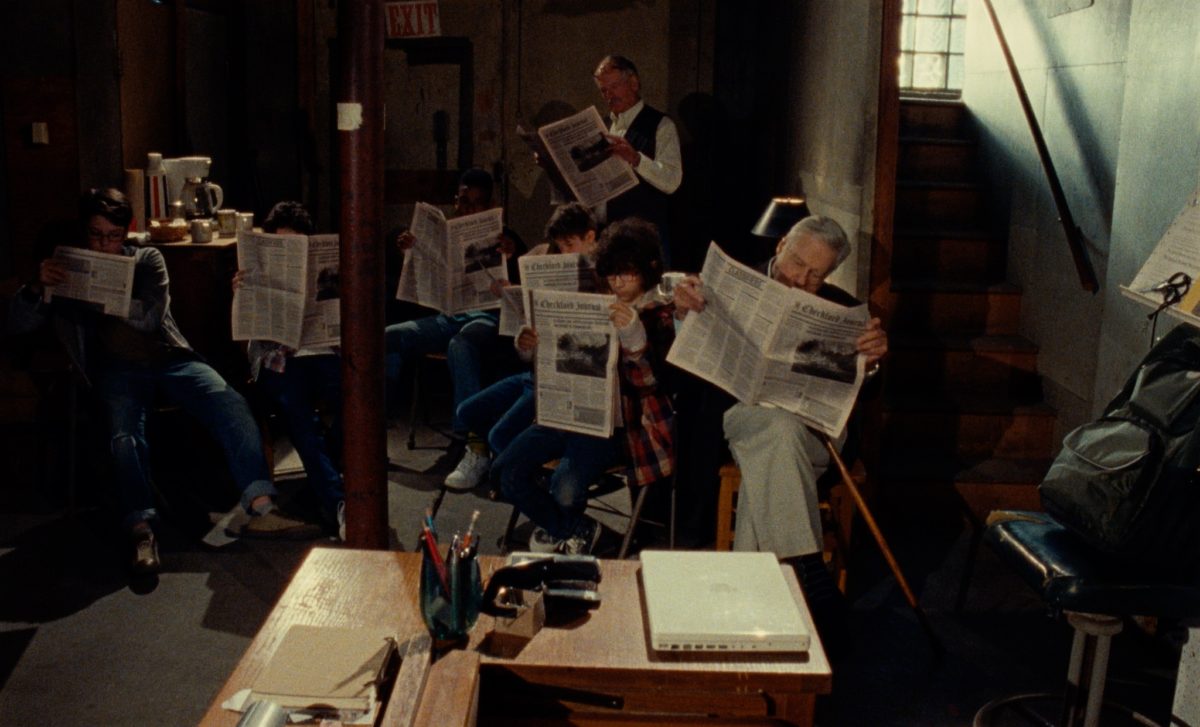
To paraphrase a character in the film, how come A Bread Factory is so different from your other films?
To paraphrase the answer, you go where the muse leads you. To me the most amusing things have been in new territory. With A Bread Factory, it’s not just that it’s so different from my other movies, but it’s that Part Two is so different from Part One.
That’s true.
I knew there would be some anger in both directions there and an element of risk. I think that’s a little strange because there isn’t anything radical about the films on paper. There are two ways you can make films. You can design them to fit into a general window, where anyone can access them at any time. I think what that ends up doing is leading to less-special movies. They can be their own kind of accomplishment, but they’re much less unique and ultimately mean less. Or, you can make movies that people aren’t necessarily ready to accept at any given time, but maybe they’ll hit them in that right window. I also believe that people are capable of opening themselves to a film even if they don’t like it at a certain point. As viewers, I think they have a lot of capacity to get a lot from movies. I want to make something that’s there for them whenever they’re ready.
There’s a lot of acrimony throughout A Bread Factory, particularly throughout all the local politics of Part One. Did any of your own artistic frustrations color the film?
A real reason for making the film was that I was trying to learn something, to make sense of something. And that something was the reason we fall in love with practicing art as well as the industry that exists around art and prolongs the existence of it. I still can’t make all that much sense of it, but I think I wanted something that captured both of those things and was realistic to their shape and how they evolve. To return to the example of the differences between Part One and Part Two, you have a kind of victory at the end of Part One. Part Two shows you that it’s a delicate victory, one that can be undone very quickly. You have something that you worked toward for an entire movie and you can lose it in a flash when you’re not paying attention during the second movie. I wanted to capture the natural rhythms and shapes of how things operate in the real world, how people operate in the real world. There are a lot of harsh realities facing a lot of artists and — to speak a little more generally — people who speak up for things that are hard to stand up for. The world needs them, but they can feel very alone because they’re in the minority in standing for these things. Part of the movie is about showing a picture of that. I think one of its more encouraging elements is just seeing someone taking on these struggles. Even if they fail, you see them caring and you see them creating. It can be a very beautiful thing to witness. If we only made decisions based on the possibility of success, I’m not sure how far we’d get. Seeing people make these bold choices based on what they believe is right and beautiful is lovely to see and it can live alongside these darker, less encouraging elements of the world.
As a New Yorker, what’s your relationship to Hudson Valley towns like Checkford?
We shot this in Hudson, New York, and I had never been until In the Family was released and I was invited to show it at a theater in Hudson, Time and Space Limited. It’s a bit like The Bread Factory. I walked into this space — which really was a bread factory — and I felt like I knew it right away. I felt like I knew the kind of people who moved through there, the role it played in their lives, the spirit that animated the place. It’s funny that you asked about geography because when I think about the U.S. I think about its movie theaters. That’s where I was first exposed to a lot of cities. It’s also a wonderful place to learn about a city because you see the different communities of people that pass through there. I love touring with these movies because you get to learn a city and meet a city and its people in a very unique place, with a spark of something to talk about. These films have some substantial themes that enable people to talk about substantial things. You have a coming together of various people and they’re talking about real things. It’s a great way to walk into a place.
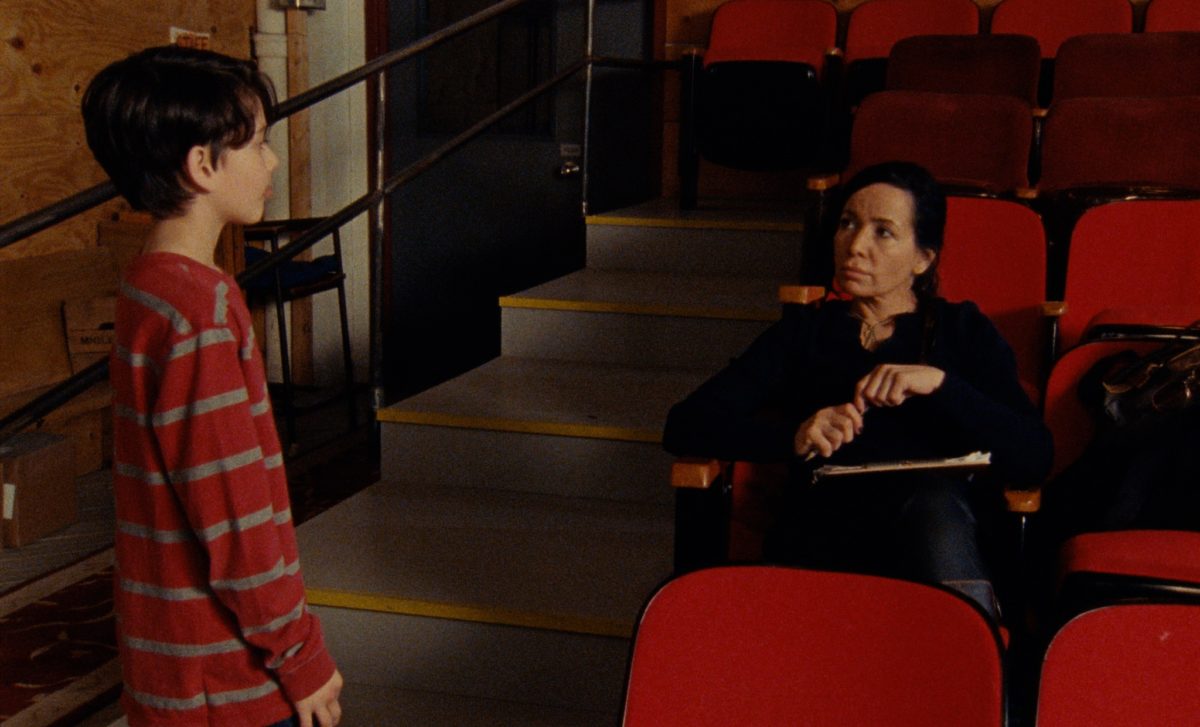
There are a few instances of literary imitation in the film including a parody of Chekhov and another, more straight-faced riff on another Russian writer. Can you talk a little about writing ‘in the style’ of someone else?
I think all writing is a sort of searching and it can sometimes be searching in a world you love. For example, the story of Tanya in A Bread Factory. I love the writing of Ivan Bunin and the story is written in the mode of several of his stories from a collection called Shadowed Paths or Dark Avenues, depending on your translation. That’s very much written out of love for his stories and what they can do. In the end, the Chekhov piece obviously becomes more of a parody. Honestly, I still don’t understand Chekhov. He’s not particularly close to me the way he is to other people I know. I just find certain productions of Chekhov very funny. There’s an element of humor in Chekhov’s writing, but I find a lot of productions funnier for their total lack of humor. The scene in the film is more a parody of what a lot of Chekhov performances boil down to than a parody of the writing itself.
Do you ever consciously imitate filmmakers?
It’s rare, but I think the most overt version is in A Bread Factory: Part Two. There’s a scene that, in my mind, is very Tati. It’s a wide shot with a lot of details and comic elements. Even the music suggests Tati. I gave my composer a Tati track to listen to while writing. One of our boom operators was French and recognized it immediately. That level of overt imitation is a rarity though.
A Bread Factory, Part Two: Walk with Me a While (2018)
Part Two of A Bread Factory is as different from Part One as any of Wang’s films are from one another. Opening with a wordless, on-stage summary of Part One’s events, it includes tap-dancing tech workers, singing tourists, and one of the most understated narrative twists I can remember. That’s to say nothing of its ending, a poignant sequence for anyone who’s ever shared in even a moment of the communal power of the arts.
Did you always intend to split the film up?
At some point in the writing, the form became clear to me. For a while I wasn’t sure if it would be a miniseries, for example, or a really long film, or even a series of three films. What did it for me was how different the two films were when you split them down the middle like this. That made a lot of sense to me. In Part One, you have something classical and (in certain elements) almost by the numbers. We define a problem, we rally the troops, and we fight. There’s a big showdown at the end and it fulfills a pretty basic movie formula that’s familiar across many different genres. It’s one picture of struggle. It’s defined — you know what you’re fighting for and how to muster your forces. Part Two, to me, split off into its own story because it deals with a much less defined struggle. You can think about it politically, artistically, sometimes it just feels like everything is all over the map and you don’t know how to fight the forces you’re up against. You lose things in ways you’re not expecting and very suddenly. The way that world operates feels like the contemporary world, it feels like how we lose a lot of things. It’s because it wasn’t defined for us and because it wasn’t just one fight. Once I’d made that split, other things could happen and could operate differently in those worlds. Things evolved, but I knew it was going to be two films about a third or halfway through the writing process.
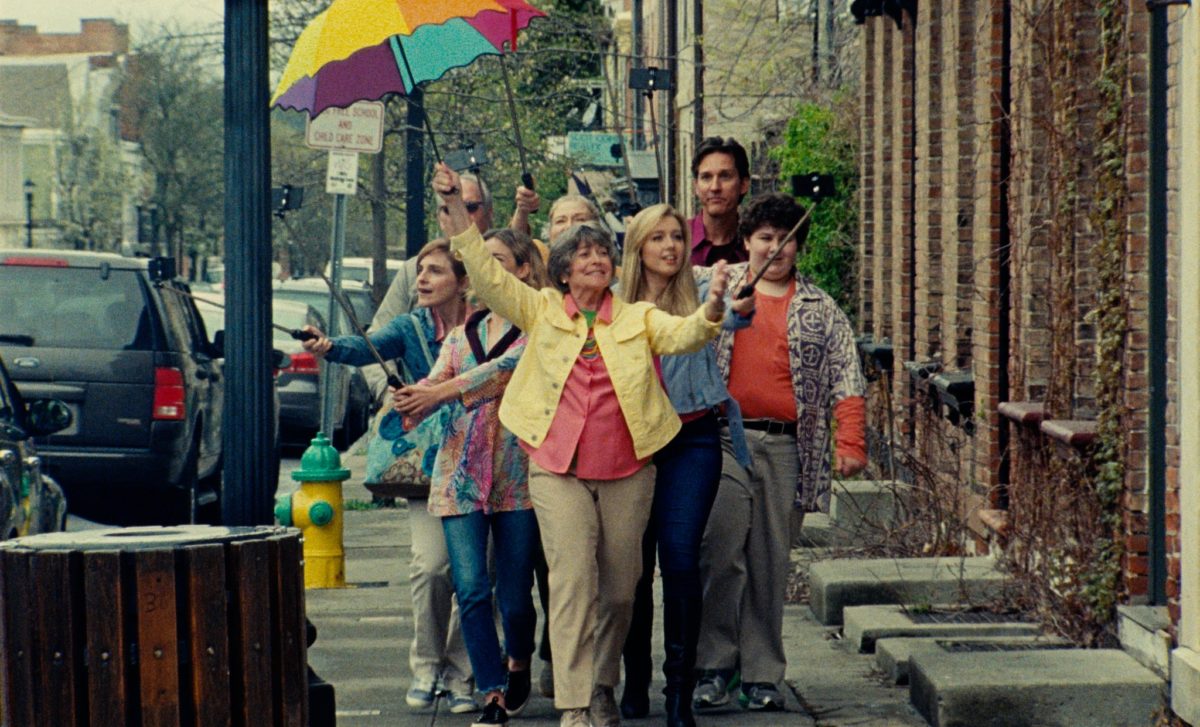
One of the interesting things about Part Two is the way art comes out into the ‘real world’ more often and more obtrusively than before. What did you mean to suggest with all the song and dance?
Your interpretation is a very common one. A lot of people have talked about how art kind of spills off the stage and into the town in Part Two. It had never occurred to me to think about it that way. I think that’s, in part, because the singing and dancing you see from the tourists and tech workers didn’t originate on the stage. They’re more outside forces coming into the town, invading the town. The way musicals have a different texture that totally breaks the rules of a film, I wanted these outside forces to invade the texture of this town and daily life there. Usually in musicals you just ignore it, but here it had a purpose. There are a few cracks in Part One, but it’s mostly naturalistic and the breaks from reality become very useful for expressing these outside forces. They become things I love, singing and dancing. I think having them represented through something I love, something expressive, keeps these elements human. You don’t start to think of them as Evil X and Evil Y. These are still people, because they’re expressing things. That seemed like a nice place to land for all the elements you want to see swirling around in Part Two, that array seemed very sensible to me.
I also didn’t want to set it up in such a way that I was saying, ‘Art is this.’ We wave a flag for art, but it doesn’t belong to anyone. And sometimes the feud isn’t about the art. In Part One, you think it’s a showdown about the fate of this art center and these people are talking about art, but it ends with this kid who’s lost. He has his heart broken, he doesn’t know what to do. The director of this play puts a monologue in his hands. It’s not to turn him into an actor. It’s just a way to help him out of himself, or maybe to express some elements of himself. It’s a way that she can help take care of him. Think of it this way: you love film, but what is it you love about film? You love certain expressions, you love ways we can talk about it, the things we can communicate to each other about it. It is really a medium in a very literal sense in that it mediates between the really meaningful stuff. I think that’s why I’m not too precious about how I think of art and its role in either Part One or Part Two. It didn’t emanate from somewhere and it just fills a function that I like.
Toward the end of the film, Greta calls the theater ‘poor people therapy.’ Has it proven therapeutic for you in a year with so few public performances?
That’s a tricky question and there’s a lot folded into it. In the past, it has been very therapeutic for me, especially when I was learning it for the first time. I was learning a lot about myself at the time. A lot of art does that. It teaches you about yourself and it opens up parts of you. I stopped directing theater a while back, and it was never really a conscious decision and I’m not shut off to the idea, but I think I find less and less in theater that’s done nowadays that really sparks the same kind of thing I had early on. I don’t know if it was just because I was younger or if theater is something different now. I think it’s probably a little of both. I’m a different person and trends in contemporary theater are leaving less and less space for things that interest me. It’s the same thing in film too. When you already feel a little disconnected from the world, the pandemic doesn’t feel all that different. As an introvert and somebody who likes to sit at home and read and write, I don’t think anyone needs to worry about me.
The final sequence of A Bread Factory sees the whole cast and several dozen characters we’ve never seen follow Dorothea and Greta down the street. Though it struck me as akin to a funeral procession, you credit the group as a Parade. Word choice is obviously important to you and it’s a theme within the film. Why ‘parade?’
This one’s got kind of a funny answer. In the screenplay it actually says, ‘Whether it’s a funeral or a parade is unclear.’ On the callsheet, we had called it a ‘parade’ and used the term as shorthand. When I was putting together the credits, I wasn’t thinking. The word went in there incidentally. The group was meant to be credited as either/or and I think it can easily be interpreted as either or. Maybe some subconscious optimism wants it to be a parade.
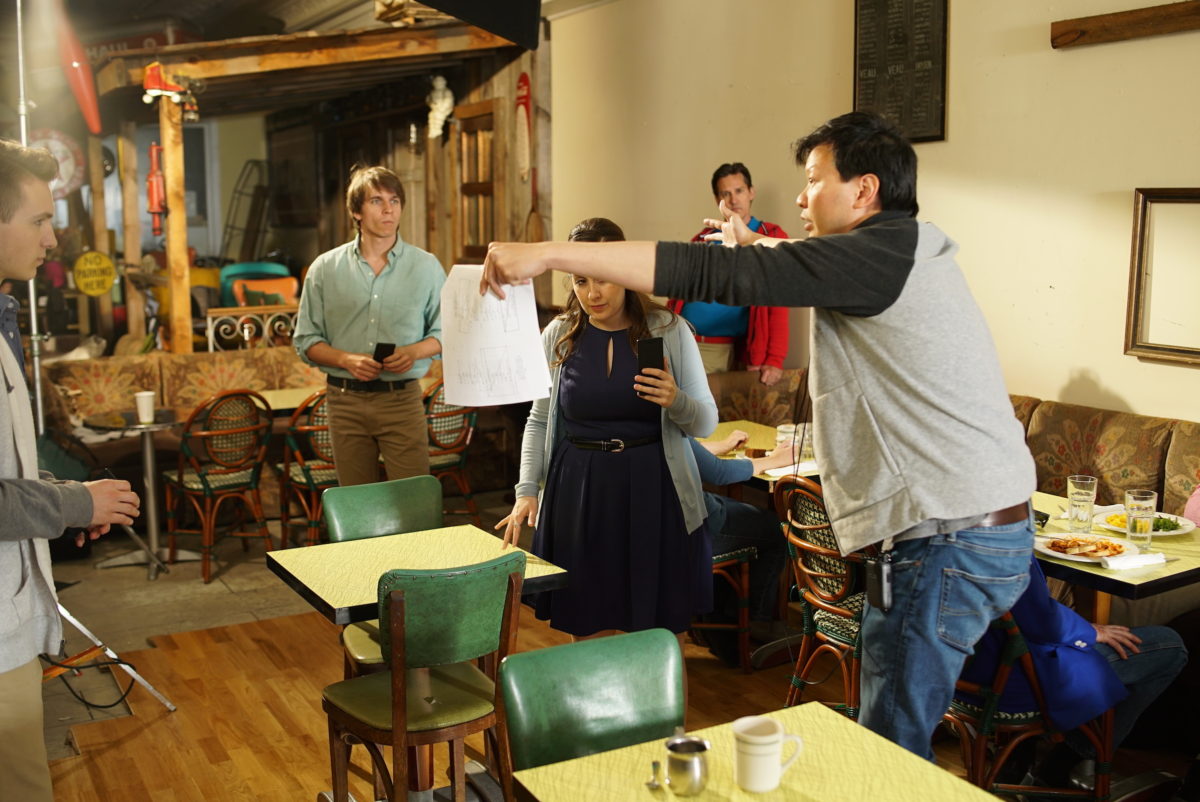
Read Pt. 1 of the Split Tooth interview with Patrick Wang
Stream A Bread Factory, Parts One and Two on Kanopy or Amazon Prime
Purchase A Bread Factory on Blu-ray/DVD
Stream The Grief of Others on Amazon Prime
Stream In the Family on Amazon Prime
Stay up to date with all things Split Tooth Media and follow Bennett on Twitter
(Split Tooth may earn a commission from purchases made through affiliate links on our site.)
Follow our series of The Best of the 2010s in Film here:
